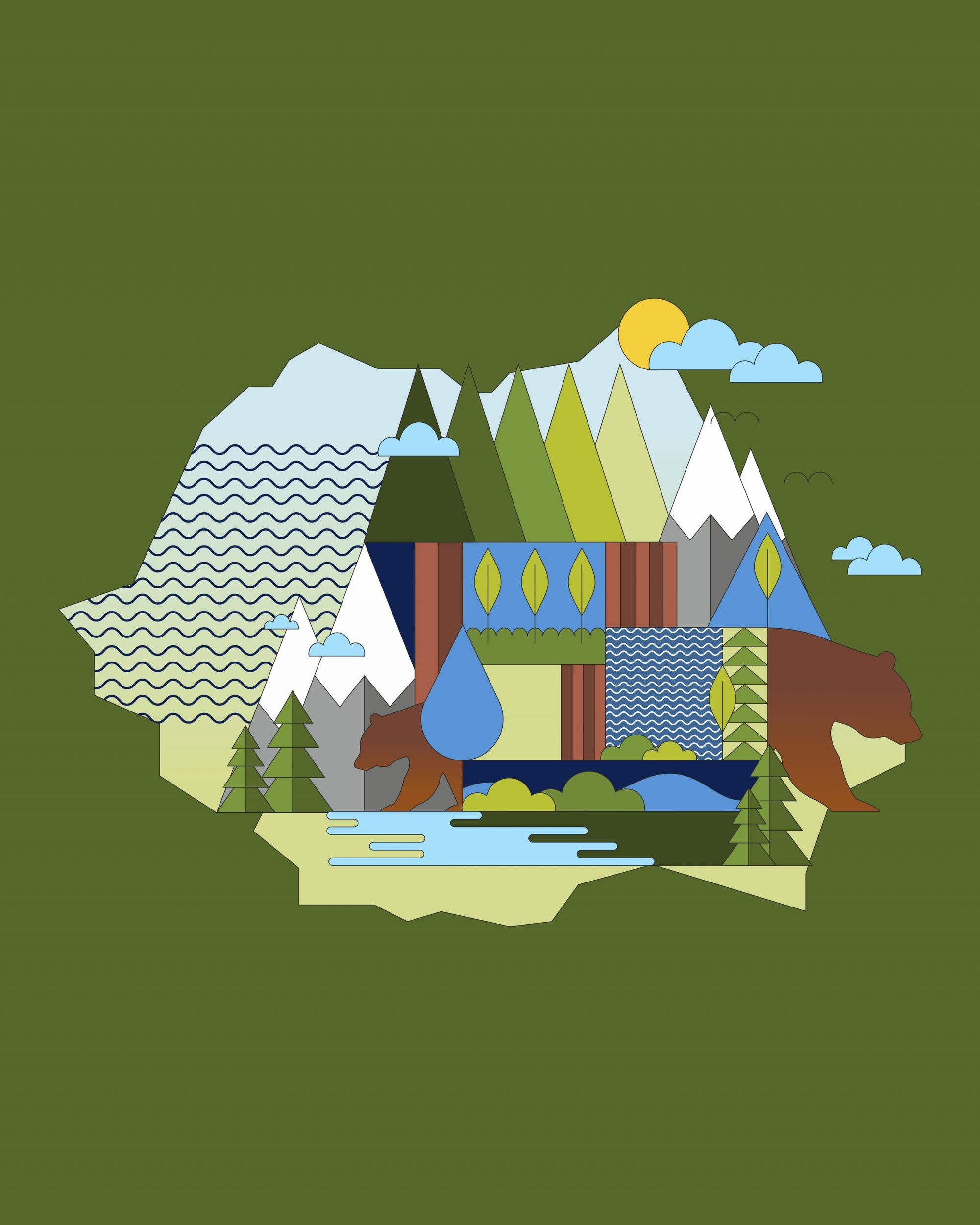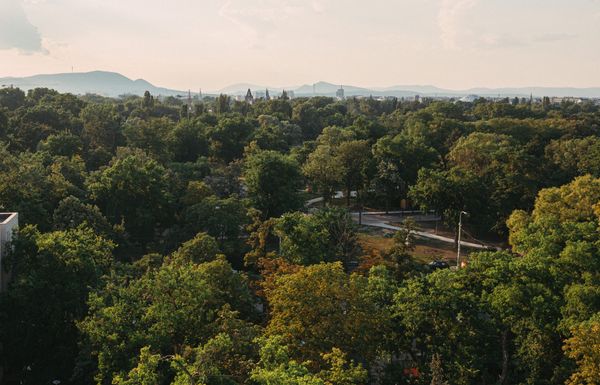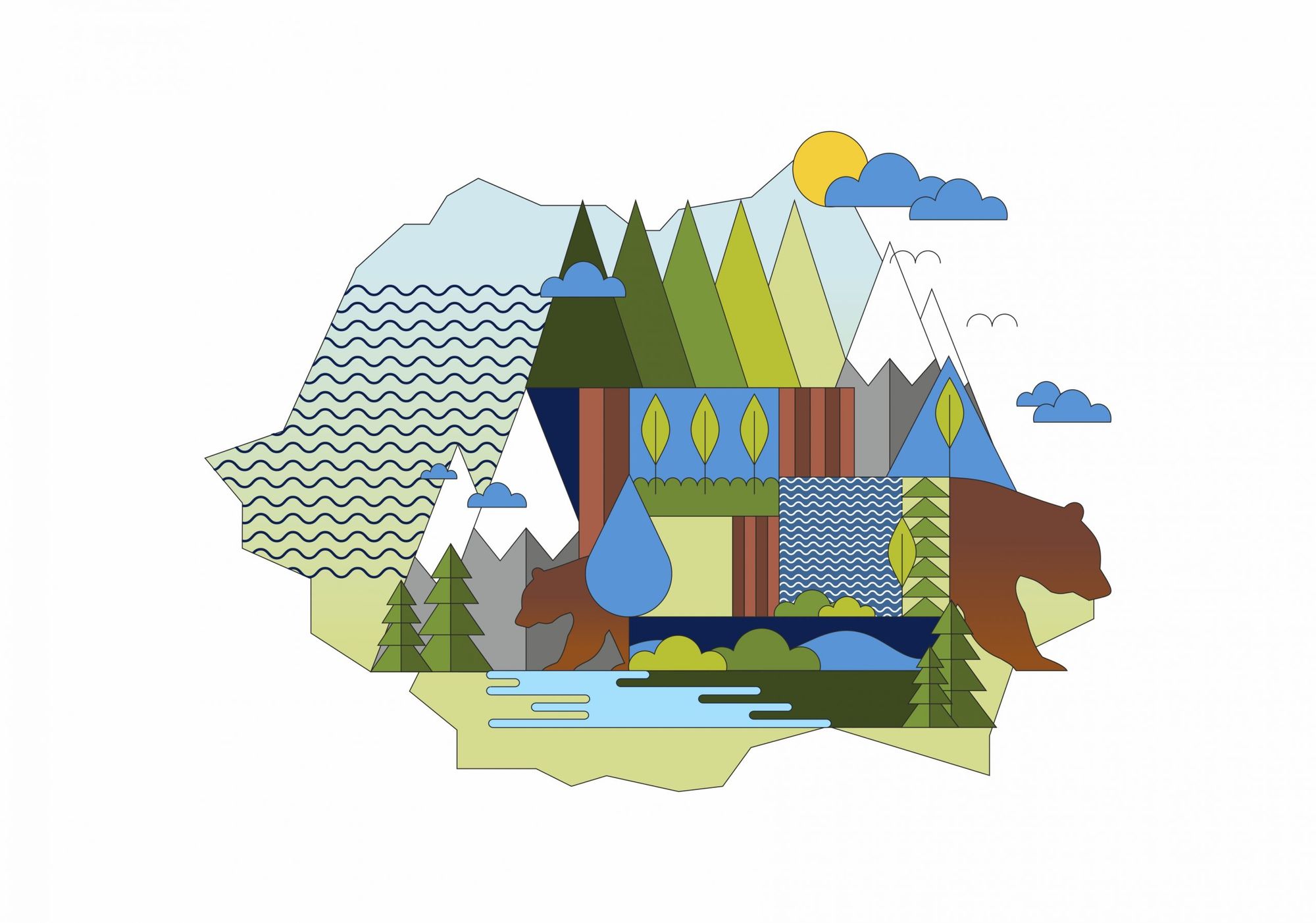Romania’s forests are among the most beautiful in Europe, no doubt about it, but climate change demands a strict forest policy, which is not made any easier by the forest mafia, overpopulated bears and EU directives. Timber theft, mafias, politics: our analysis of the present and future of Romania’s forests.
Excessive carbon dioxide emissions are one of the drivers of climate change, so one of the main objectives of the European Union’s climate policy is to reduce greenhouse gas emissions by at least 55% until 2030 and make Europe the first climate-neutral continent by 2050. This will require a shift to renewable energy sources, of which wood-based bioenergy currently accounts for 60% in the EU. Therefore, the importance of forests is not only crucial for oxygen supply, but according to the World Economic Forum, sustainable forest management is a €190 billion business opportunity worldwide and will create 16 million jobs by 2030.
Given the above, there is no question that forest development is needed, and Romania has many interesting things to offer in this area, from bear overpopulation to extensive forest mafias. Romania is one of the model countries in the Central and Eastern European region in terms of forest management, both regarding solutions and challenges, supporting the EU Forest Plan by adapting it to national realities and opportunities.
One of the main obstacles to afforestation is that climate change continues to have a negative impact on Europe’s forests. As the vegetation zones in Europe shift northwards, forest ecosystems have been transformed in most places. Over the past decade, extreme weather and excessive logging have reduced forest cover. However, it should also be noted that the challenges are global: forest area continues to decline at a very alarming rate, averaging 4.7 million hectares per year, and deforestation is estimated at 10 million hectares per year globally. Despite the intensive deforestation, the good news is that the Romanian forest areas have not decreased in recent years, and in fact, they grew rapidly until 2017, and since then, their share has stagnated. Thanks to the EU strategy, at least 3 billion new trees will be planted across Europe by 2030, respecting ecological principles. An interesting feature is that anyone can follow the process via the MapMyTree website.
Urban afforestation and forest artificial intelligence
According to Barna Tánczos, Romania’s Minister of Environment, Water and Forestry, there has been no progress in increasing forest cover in recent years; therefore, they plan to invest in new forest areas, including urban forests. In addition to planting 56,000 hectares of land, 315 hectares of urban forest will enrich the overall landscape of Romania. The development will serve as an integrating element in society because the Romanian government will provide public pedestrian and cycling access to all types of forests, promoting active recreation, leisure and nature hikes. They will also set up forest schools in places easily accessible to children.
Romania is also calling on advanced technology to help protect forests through the EU strategy. Satellite imagery, drones, artificial intelligence systems, video cameras and digital timber measurement systems are helping foresters by providing up-to-date guidance on forest regulations, for example, on applying the rules of species protection.

Tree-mafia and cops
Illegal logging in Romania has reached particularly alarming levels these days and is often a hot topic of public debate. “Organized crime is behind the problem of illegal logging in Romania,” says David Gehl, Head of Technology and Traceability at the Environmental Investigation Agency (EIA), an international NGO fighting environmental crime. The situation is so serious that last February, the European Commission launched infringement proceedings against Romania, which has repeatedly failed to act in the wood sector. According to the Organised Crime and Corruption Reporting Project, 336,000 hectares of forest disappeared between 2001 and 2018, one-sixth of Hungary’s current forest area.
The former director of the Cheile Nerei-Beusnita National Park in Romania has admitted that there is strong pressure from the state forestry directorate to increase logging in the so-called buffer zones of national parks. The “loggers” often report on the spot (LINK) that they have been misinformed by the national parks directorate, because they don’t know what a protected area is and that it is not their responsibility to define it.
Today, one of the main goals of Romanian forest policy is to combat wood theft. According to Minister Barna Tánczos, the SUMAL 2 timber tracking system, which has been in place for almost a year and is designed to curb illegal logging, has proved its worth in Romania. The system includes a phone app that allows anyone who sees a wood-carrying truck to check if the cargo is legal or not. The system has also reduced bureaucracy by digitizing the process of permit issuance. Cargo tracking is supported by GPS tracking and uploaded photos of the shipment. In the case of shipments that appear to be illegal, the system offers to call the emergency number 112. According to the minister, an average of 2.5 illegal consignments were previously detected every day, but now less than 1 illegal consignment is identified every day on average.
However, the situation is not rosy. According to MEP Adrian Giurgiu, twice as much timber is cut from Romania’s forests as is sold legally. One of the most common ways of stealing wood is for a truck to take several consignments out of the woods with the same ticket, which is, in fact, only valid for one consignment. Neither the forestry inspectorate nor the police have the capacity to stop and check all trucks carrying wood. That is why a bill has been proposed, which would allow civil guards to check the origin of a consignment of timber, the accompanying documents, the driver’s and the passengers’ identity if there is a suspicion of a breach of the law—even if there is no police officer present. However, the proposal was met with debate in the Senate Judiciary Committee, and since then, there has been no significant progress on the issue.
“Romania does not need to be turned into a European zoo”
Romania has the largest brown bear population in Europe. According to Barna Tánczos, human intervention is very much needed to control the bear population, even if it is not necessarily supported by some organizations or the European Union itself. The primary solution should not be hunting, but rather providing habitat for bears. Since 2016, bear hunting has been banned, but bear attacks have increased rapidly, and from 2018 only post-intervention is allowed, meaning that only problematic specimens can be killed.
The law allowing for the shooting of dangerous bears is currently being renegotiated, as it originally only provided for the shooting of dangerous bears inside settlements, but a modification would extend the possibility to areas outside settlements, forests and pastures, as a large proportion of incidents occur outside of them. “Bears are endangering people in forestry houses, cottages, cantonment houses, weekend houses; but they are also causing significant damage to crop farmers, cornfields, orchards, and these are all outskirts,” said Csaba Könczei, MEP, one of the sponsors of the amendment.
Changes to the law allowing the removal of dangerous bears are expected to be back on the agenda in the spring. It is interesting to note that under the current legislation, authorities dealt with 183 cases by mid-December, and only 7 of them ended in shooting the bear—so the legislation to reduce bear damage has not had a significant negative impact on the population.

Cosmic journey in the Polish pavilion of the Dubai World Expo | Instytut B61 x Rad Duet

Favorite interiors of the week_Ukrainian edition










